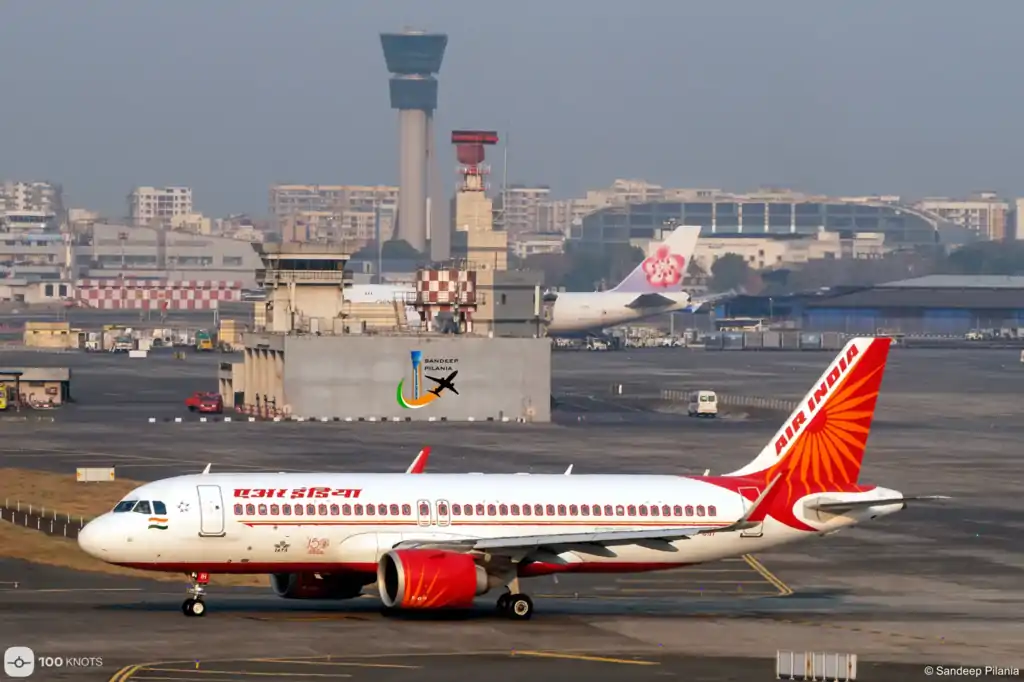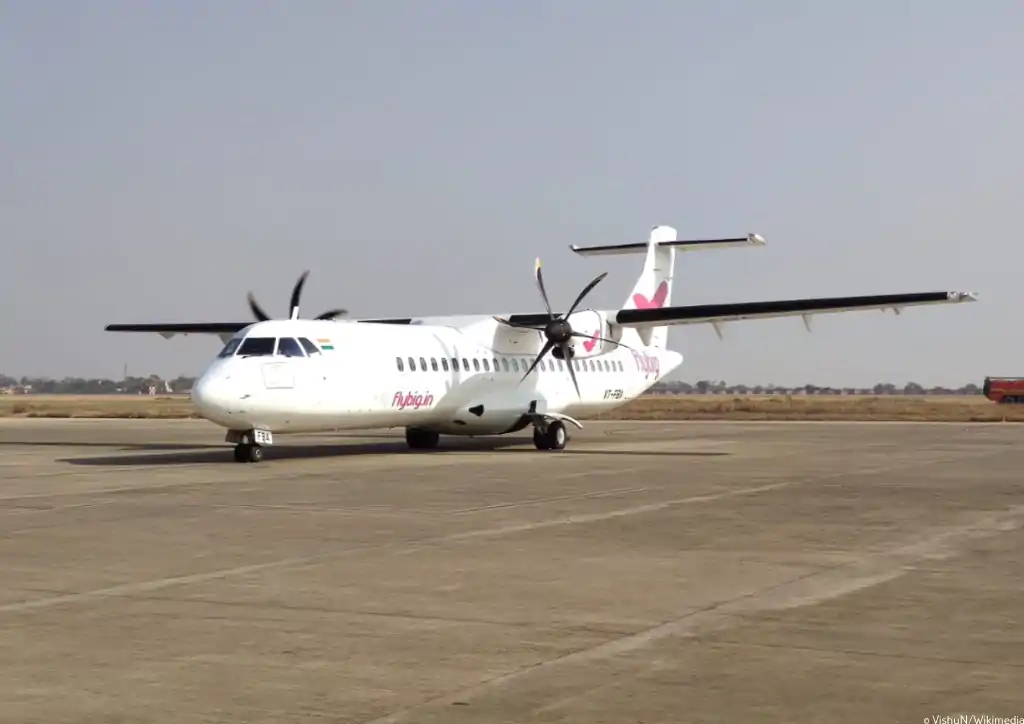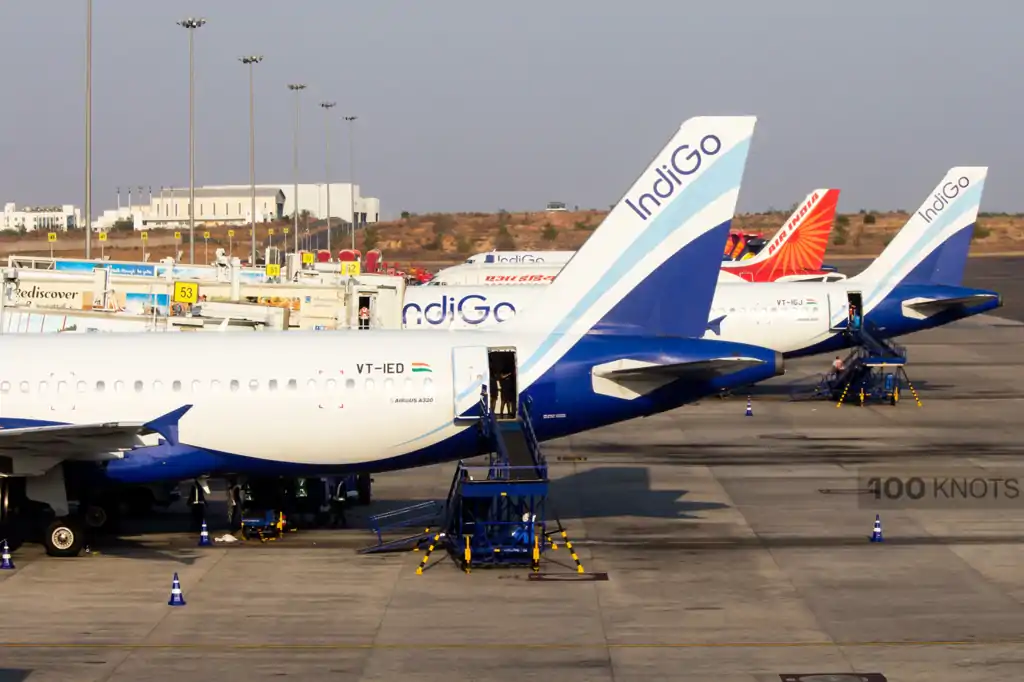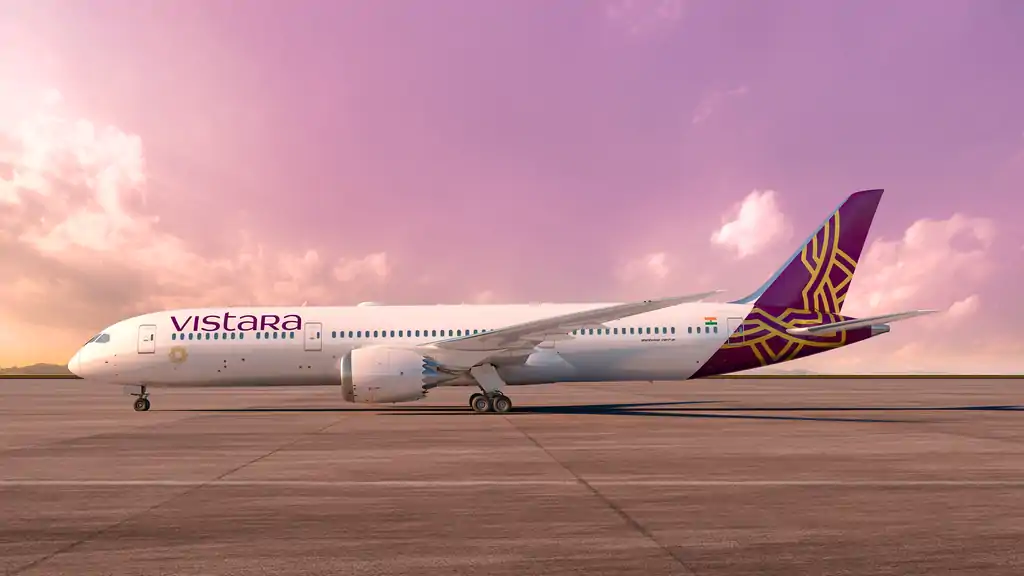Island Aviation Services Limited (IASL), operating as Maldivian, is seeking expressions of interest (EOIs) from lessors for an exciting leasing opportunity. The national airline of the Maldives is on the lookout for one Airbus A319-100 or one A320-200 on an operating lease for a three-year term, with a targeted delivery by September 2024. This initiative was recently announced in the Maldives Government Gazette on May 13, 2024.
Key Preferences for Lessors
Engine and Maintenance Requirements
Maldivian has set forth a preference for lessors who can provide replacement or spare engines at no additional cost, aside from maintenance reserves aimed at engine performance restoration and Engine LLP (Life Limited Parts) replacement. This clause is a significant advantage for lessors as it underscores Maldivian’s commitment to maintaining high operational standards while managing costs effectively.
Aircraft Specifications and Condition
The airline’s criteria for the leased aircraft include:
- A fully equipped galley.
- Freedom from all major maintenance events from the date of delivery.
- Delivery with Maldivian’s livery already painted.
- At least 5,000 cycles remaining on each engine LLP until discard.
- A seating configuration of at least 180 seats for the A320-200 or 150 seats for the A319-100.
These stringent requirements ensure that Maldivian will be receiving aircraft that are not only operationally efficient but also ready for immediate service, minimizing downtime and operational disruptions.
Eligibility and Submission Requirements
Who Can Apply?
The opportunity is open to a wide range of entities including:
- Aircraft owners
- Lessors
- Airlines
- Commercial banks
- Financial institutions
- Entities managed or wholly owned directly or indirectly by such businesses
However, aircraft brokers and other intermediaries are excluded from participating in this leasing offer.
Detailed Financial and Organizational Data
Prospective lessors are required to provide comprehensive organizational data. This includes audited financial statements for the past two years or, for newly formed businesses, a certified certificate of net worth. Additionally, a detailed package of documents, records, and manuals must be provided prior to delivery, along with specifics regarding the minimum redelivery conditions.
Proposal Submission and Timeline
Electronic Submission
EOIs must be submitted electronically by 1630L (1130Z) on May 29, 2024. The electronic submission ensures a streamlined and efficient process, allowing Maldivian to handle the influx of proposals effectively.
Evaluation and Notification
Maldivian intends to complete its evaluation of the offers promptly and notify the successful applicant by mid-June 2024. This rapid turnaround time highlights the urgency and importance of this acquisition to Maldivian’s operational strategy.
Conclusion
This leasing opportunity represents a strategic move by Maldivian to enhance its fleet and maintain its service quality. By setting clear and high standards for potential lessors, the airline aims to ensure that it partners with entities capable of meeting its operational needs efficiently. As the submission deadline approaches, the aviation industry will be keenly watching to see which lessor secures this coveted deal and helps Maldivian achieve its operational goals.
With Inputs from ch-aviation
Read next
In an ambitious move to bolster its regional connectivity, IndiGo, India's largest low-cost carrier (LCC), is reportedly in advanced discussions to acquire approximately 100 regional aircraft. Sources familiar with the matter disclosed this development to India's Economic Times, highlighting that the airline is currently evaluating offers from three major aircraft manufacturers: ATR - Avions de Transport Régional, Airbus, and Embraer.
Why ATR is the Front-Runner
Leveraging Existing Fleet Synergies
Among the contenders, ATR appears to be the leading candidate. IndiGo already operates a fleet of forty-five ATR72-600s on regional routes within India and has five additional units of the same model on order. The familiarity with ATR aircraft and the established relationship with the manufacturer provide significant operational advantages. Economies of scale could be achieved by expanding the ATR72-600 fleet, resulting in cost savings in maintenance, training, and operations.
Evaluating the Competition: Airbus and Embraer
While ATR is a strong favorite, IndiGo is also considering the Airbus A220 and Embraer E175. Both aircraft types offer modern features and efficiencies that could complement IndiGo's existing fleet. The A220, with its advanced aerodynamics and fuel-efficient engines, and the E175, known for its excellent performance in regional markets, are formidable alternatives that could bring added flexibility and capabilities to IndiGo's operations.
The Potential Order Structure
Split Between Firm Orders and Options
According to the Economic Times report, the proposed acquisition is likely to be split evenly between firm orders and options. This approach would give IndiGo the flexibility to adjust its fleet expansion plans based on market conditions and operational requirements. Such a structure allows the airline to secure advantageous pricing and delivery slots while retaining the ability to scale its fleet as needed.
Strategic Importance for IndiGo
Strengthening Market Leadership
IndiGo's potential acquisition of up to 100 regional aircraft underscores its commitment to maintaining and expanding its market leadership in India. With around a 60% share of the domestic market, IndiGo is strategically positioning itself to capture increased demand for regional air travel, driven by India's economic growth and increasing connectivity needs.
Enhancing Regional Connectivity
The addition of more regional aircraft will enable IndiGo to enhance connectivity between smaller cities and major hubs, fostering economic development and improving access for passengers across the country. This expansion aligns with the Indian government's Regional Connectivity Scheme (RCS), which aims to make air travel affordable and widespread.
Awaiting Final Decision
While IndiGo's discussions with ATR, Airbus, and Embraer are in advanced stages, no final decision has been made. The airline is carefully considering its options to ensure the best fit for its operational strategy and growth objectives. The aviation industry eagerly awaits IndiGo's final announcement, which is expected to have significant implications for regional air travel in India.
Conclusion
IndiGo's potential acquisition of up to 100 regional aircraft marks a significant step in its expansion strategy. By potentially increasing its ATR72-600 fleet and exploring options with Airbus and Embraer, the airline aims to reinforce its market dominance and enhance regional connectivity. As the decision looms, industry stakeholders and passengers alike anticipate the positive impact of this major fleet expansion on India's aviation landscape.
With Inputs from ch-aviation
Read next
Can India's Airports Soar Higher? A Promising Outlook for Aviation Stakeholders
Abhishek Nayar
18 May 2024

India's aviation sector is poised for significant growth in the fiscal year 2025, with overall air passenger traffic projected to increase by 8-11% year-over-year, reaching approximately 407-418 million. This forecast, provided by ICRA, highlights a positive trend fueled by a surge in both leisure and business travel, enhanced connectivity to new domestic destinations, and a steady rise in international travel.
In the previous fiscal year, passenger traffic reached 376.4 million, marking a 15% year-over-year increase and surpassing pre-Covid levels by 10%. This substantial growth demonstrates the resilience and recovery of the Indian aviation industry post-pandemic.
Key Drivers of Growth
The anticipated growth in passenger traffic is attributed to several factors:
- Increase in Leisure and Business Travel: As the economy rebounds, there is a noticeable uptick in both leisure and business travel, contributing to higher passenger volumes.
- Improved Domestic Connectivity: The introduction of new routes and better connectivity within the country is encouraging more domestic travel.
- Rising International Travel: The resurgence in international travel is another critical driver, reflecting a broader recovery in global mobility trends.
Comparative Global Performance
Vinay Kumar G, Vice President & Sector Head, Corporate Ratings at ICRA, noted that India's recovery in airport passenger traffic is among the best globally. In 2023, India accounted for 4.2% of global passenger traffic, an improvement from 3.8% in 2019. While global passenger traffic recovered to 96% of pre-Covid levels, India exceeded this benchmark, reaching 106%.
This robust performance is largely due to India's strong economic growth and the addition of new airport routes, positioning the country to outperform global trends in the aviation sector.
Regulatory Improvements and Economic Impact
The Airports Economic Regulatory Authority (AERA) plays a crucial role in determining tariffs at major airports, setting rates for five-year control periods. Over the past four to five years, the regulatory regime has matured, evidenced by a reduction in implementation delays for tariff orders, now less than 1.5 years for the third control period, down from 3-3.5 years during the first and second periods.
Additionally, progress has been made in addressing long-standing issues such as the cost of equity, return on security deposits, forex losses, and the treatment of real estate income. The gap between proposed and disallowed capex has also narrowed significantly, from 25-30% in the first two control periods to around 10% in the third.
Financial Outlook for Airport Operators
ICRA's analysis suggests that revenues for its sample set of airport operators are likely to grow by 15-17% year-over-year in fiscal 2025. This growth will be driven by sustained improvements in passenger traffic, tariff increases at major airports, and a ramp-up in non-aeronautical revenues.
Vinay Kumar G expressed confidence in the financial health of airport operators, noting that despite higher interest expenses and debt repayments associated with new capital expenditures, profitability margins and debt coverage metrics are expected to remain strong. The credit profiles of airport operators are projected to be robust, supported by healthy accruals and comfortable liquidity.
Conclusion
The Indian aviation sector appears to be on a promising trajectory, with significant growth in passenger traffic and a favorable regulatory environment. As the industry continues to recover and expand, airport operators and aviation stakeholders can look forward to a period of robust performance and financial stability, positioning India as a leading player in the global aviation market.
Read next
In the intricate dance of air travel, delays are an unwelcome partner. For passengers, time spent on the tarmac can feel like an eternity, prompting frustration and discomfort. To mitigate such experiences, federal laws and regulations exist to ensure that airlines provide adequate measures for passenger welfare during delays. However, recent incidents involving Mexican carrier Volaris Airlines and others highlight persistent challenges in upholding these standards.
Tarmac Troubles: Volaris Airlines Under Scrutiny
The U.S. Transportation Department's announcement of fines up to $300,000 against Volaris Airlines underscores the severity of tarmac delays. With incidents reported in Houston and St. Louis, Volaris faces penalties for breaching the four-hour limit without allowing passengers to deplane. The imposition of fines signals a firm stance by regulators on enforcing consumer protection measures.
Regulatory Response and Industry Accountability
Transportation Secretary Pete Buttigieg's statement emphasizes the government's commitment to safeguarding consumer interests and ensuring airline accountability. Volaris' assertion of terminal saturation as a cause for delays raises questions about operational readiness and contingency planning. The department's intention to impose higher penalties on rule violators underscores the necessity for deterrent measures.
Precedents and Precautions: Lessons Learned from Past Cases
The case of American Airlines, fined a record $4.1 million for tarmac delays attributed to weather events, sheds light on the complexity of operational challenges. Despite representing a minute fraction of total flights, the severity of penalties underscores the importance of adherence to regulations. Similarly, British Airways' penalty for a 2017 incident underscores the enduring consequences of non-compliance.
Industry Response and Commitment to Compliance
In response to regulatory actions, airlines reaffirm their commitment to safety and adherence to regulations. Volaris asserts compliance with applicable laws across its operational jurisdictions, prioritizing passenger safety. However, challenges persist in balancing operational efficiency with regulatory compliance, necessitating continuous refinement of industry practices.
Conclusion: Navigating the Skies of Compliance
As air travel resumes its course amid evolving regulatory landscapes, the imperative for airline accountability remains paramount. Regulatory fines serve as a crucial deterrent against lapses in compliance, reinforcing the centrality of passenger welfare in aviation operations. As airlines navigate the skies, a steadfast commitment to regulatory adherence is essential to ensure safe and seamless journeys for passengers worldwide.
With Inputs from Reuters
Read next
In a significant stride towards consolidation in the Indian aviation sector, the impending merger between Air India and Vistara has garnered attention and anticipation. With Singapore Airlines at the helm of Vistara, this strategic move not only promises to redefine the aviation landscape but also underscores the evolving dynamics of the global airline industry.
Merger Dynamics and Club Vistara Integration
The merger process, initiated by Tata Sons, the parent company of Vistara, aims to seamlessly integrate the operations of Air India and Vistara into a unified entity. The integration, slated for completion by the end of the year, holds promise for synergies in network expansion, operational efficiency, and customer experience enhancement.
One of the pivotal aspects of the merger is the assimilation of Club Vistara, Vistara's frequent flyer program, into Air India's Flying Returns. This transition will entail a comprehensive migration process, ensuring continuity for Club Vistara members while aligning with the operational framework of Flying Returns.
Key Integration Details
- Tier Status: Members' tier status will be determined based on the cumulative points from both programs, ensuring retention or potential upgrades in tier status.
- Points Balance Transfer: Club Vistara points and tier points will be transferred to Flying Returns at a 1:1 ratio, with extended validity to mitigate any concerns regarding point expiration.
- Future Bookings and Vouchers: Existing bookings, as well as unused vouchers, will be seamlessly transferred to the new platform, adhering to the respective program rules.
Strategic Implications and Regulatory Milestones
The proposed merger not only consolidates Tata Group's presence in the aviation sector but also reinforces Singapore Airlines' commitment to the Indian market. The combined entity is poised to become India's largest international carrier, bridging continents and augmenting connectivity on a global scale.
While regulatory approvals, including those from the National Company Law Tribunal (NCLT), are pending, the Competition Commission of India has already greenlit the merger, paving the way for the integration process to commence. Once finalized, the merger will facilitate the amalgamation of networks, resources, and fleet deployments, further solidifying the Tata Group's aviation portfolio.
Conclusion
As the Air India-Vistara merger unfolds, it heralds a new chapter in the annals of Indian aviation, characterized by collaboration, innovation, and strategic foresight. With a shared vision for excellence and a commitment to serving passengers' evolving needs, the merged entity is poised to soar to greater heights, embodying the spirit of synergy in the skies.
Read next
Is FA Airlines' Acquisition of FlyBig Set to Reshape India's Aviation Landscape?
Abhishek Nayar
17 May 2024

In a recent development poised to make waves in India's aviation sector, Mumbai-based FA Airlines is on the brink of acquiring regional carrier FlyBig. The impending deal, backed by credible sources, signals a significant expansion for both entities and carries the potential to reshape the nation's aviation landscape.
The Strategic Acquisition and Expanding Horizons
FlyBig, with its modest fleet of four aircraft, has garnered attention in the regional aviation domain since its inception in 2022. Now, with FA Airlines' strategic move to acquire it, the dynamics are set to undergo a transformation. The initial pact inked between the two entities marks the commencement of a venture laden with possibilities.
One of the most striking aspects of this acquisition is the substantial fleet expansion anticipated for FlyBig. Sources close to the development suggest that post-transaction, FlyBig's fleet is poised to swell by over 20 aircraft. Such a significant increase not only augurs well for FlyBig's operational capacity but also underscores FA Airlines' strategic vision for growth and market penetration.
Leadership Insight and India's Aviation Potential
At the helm of FA Airlines stands Fauzia Arshi, a notable entrepreneur hailing from the film industry. As the Managing Director, her leadership acumen and industry insights are poised to play a pivotal role in steering this acquisition towards success. Arshi's foray into the aviation sector, coupled with her entrepreneurial spirit, adds an intriguing dimension to FA Airlines' trajectory.
India's aviation sector has emerged as one of the world's fastest-growing markets, with domestic air traffic witnessing a steady surge. Official data from the January-March 2024 period underscores this trend, with airlines ferrying a staggering 391.46 lakh passengers. Against this backdrop of burgeoning demand, FA Airlines' strategic maneuver to bolster its presence through the FlyBig acquisition appears well-timed.
Mapping the Regional Carrier Landscape
The Indian aviation arena is replete with scheduled regional carriers, each vying for a slice of the market. Presently, the landscape includes stalwarts like Alliance Air, Indiaone Air, Star Air, Zooom, and Fly91, each contributing to the robustness of the sector. With FlyBig poised to join this illustrious roster, the competitive dynamics are poised for a recalibration.
A Glimpse into the Domestic Aviation Realm
Beyond regional carriers, India boasts a vibrant ecosystem of domestic airlines, comprising giants such as Air India, AIX Connect, Vistara, IndiGo, and SpiceJet. This diverse lineup underscores the multifaceted nature of the Indian aviation market, where competition thrives amidst a backdrop of burgeoning demand and evolving consumer preferences.
Looking Ahead
As FA Airlines inches closer to finalizing its acquisition of FlyBig, all eyes are on the transformative journey that lies ahead. With India's aviation potential serving as a catalyst for growth, this strategic move has the potential to redefine industry dynamics, unlock synergies, and pave the way for enhanced connectivity and accessibility across the subcontinent. As stakeholders eagerly await further developments, one thing remains certain: the skies over India are primed for a new era of flight.





Comment